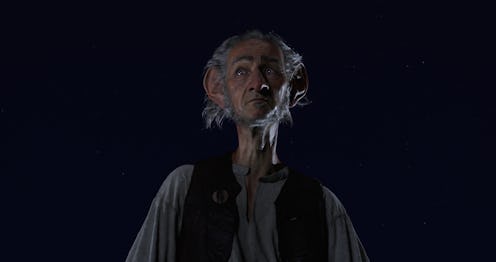
According to Urban Dictionary, the acronym BFG has multiple meanings. In some circles, the BFG is a rapper also known as 'Big F--kin Gangsta,' in others, BFG stands for "Big F--king Gun" — a term popularized by the Doom and Quake video game series. But, for other, more innocent ears, BFG has only one meaning: Big Friendly Giant. The term, coined by Roald Dahl in his book, The BFG, doesn't really have any sort of hidden meaning. It's the name of, you guessed it, a big friendly giant. But that's to say that the acronym doesn't have any significance at all.
The idea of the BFG was first shared with the public in Dahl's1975 story Danny, the Champion of the World, but it wasn't until seven years later that the BFG would reach icon status with the publication of Dahl's The BFG book, widely regarded as a children's classic. Over the years, many have come to wonder what inspired Dahl to write The BFG, or why the BFG has no name unlike fellow giants Fleshlumpeater or Bloodbottler. The true meaning behind the moniker has yet to be revealed, but there is something to be said for the theory that Roald Dahl himself was the BFG.
What proof do we have that Dahl was the BFG, you ask? Well, for starters, Dahl grew to be six feet and six inches tall as an adult — an unusually tall height by any measure — and the parallels between himself and the BFG don't end there. Dahl's daughters, Ophelia and Lucy, have said that their father used to stand outside of their bedroom window on a ladder and used a bamboo cane to blow good dreams into their minds, just like the BFG does with his magic pipe. Ophelia told The Telegraph that neither she nor her sister really believed in the BFG, but they knew that it was important for their father to give them "happy dreams."
Dahl's daughters might not have believed their father was the BFG, but for millions of readers, Dahl really was somewhat of a BFG. Dahl's books like Charlie and the Chocolate Factory and Matilda have inspired more than their fair share of happy dreams (and a few nightmares, too). Furthermore, The BFG ends (spoiler!) with the BFG writing a book about his adventures with Sophie, hence the existence of the book.
As the transitive property of equality tells us, if a = b and b = c, then a = c — and if Dahl is the author of The BFG and The BFG was written by the BFG, then Dahl is the BFG.
Images: Walt Disney Studios